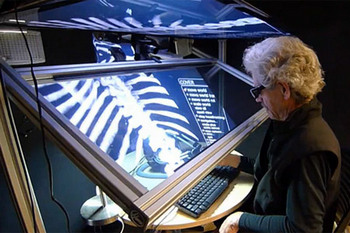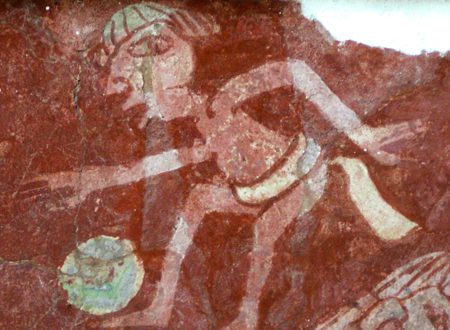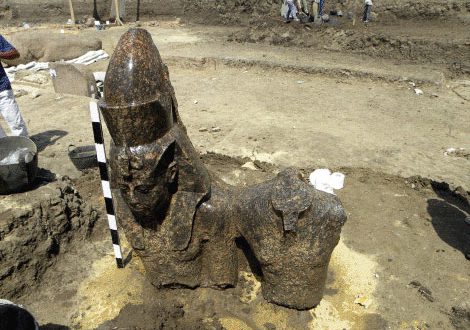 Andrew Collins promised the world that soon he’ll unravel Egypt’s best kept secret in ‘Beneath the Pyramids: Egypt’s Greatest Secret Uncovered’, but it seems that Dr. Zahi Hawass has beaten Collins to this, stating that the so-called cave-complex is nothing but a rock cut tomb, already thoroughly explored and examined.
Andrew Collins promised the world that soon he’ll unravel Egypt’s best kept secret in ‘Beneath the Pyramids: Egypt’s Greatest Secret Uncovered’, but it seems that Dr. Zahi Hawass has beaten Collins to this, stating that the so-called cave-complex is nothing but a rock cut tomb, already thoroughly explored and examined.
Dr. Hawass says in a statement on his website: “This story shows how people who do not have a background in archaeology use the media and the Internet to make headlines.Unfortunately, when people make statements without knowing the history of the subject, they may mislead the public.For example, if a person did not know the history of the Sphinx and the pyramids of Giza, they might say that it came from a lost civilization, but scholars of Egypt have disproved that.When I saw this Internet story about a new discovery at Giza, I knew it was misleading.The article reports that a huge system of tunnels and caves has been found; however, I can say that there is no underground cave complex at this site.”
The statement stresses that the Giza plateau is one of the most well studied sites in Egypt; it has been explored, mapped and recorded by many archaeologists, including Dr. Hawass: “We know everything about this site as it currently stands, though new discoveries may come about through continued scientific excavation.” And it’s obvious that Dr. Zahi does not think of Collins’ research as scientific.
The rock-cut tomb that Collins claims to be ‘The Lost Underworld of the Pharaos’ was discovered an opened in 1816 by Henry Salt and Giovanni Caviglia. When they explored it, they called it a catacomb because it contains some tunnels and corridors cut deep into the rock. Years later, Howard Vyse and John Shae Perring came toexamine the rock cut tomb.It has also recently been re-explored by the Supreme Council of Antiquities. The tomb is also known to have been used as a storeroom by George Reisner during his excavations at Giza in the early 20th century.
The ‘catacombs’ are about 3.2 meters high and the entrance leads south into the front hall, shaped like an inverted T.From there two halls are visible, one to the right and one to the left.The left leads to a big room cut into the rock, about 6 meters long, which contained Latin inscriptions on the ceiling, showing that this tomb has been opened throughout the ages.To the right there is another square hole cut into the rock, which leads to a descending passage filled with sand, and contains pottery sherds, bones and other artifacts.There are other passageways cut into the rock from the main corridors, but these are short tunnels. (Find the ‘Entrance to the Lost Underworld’ on Google Maps or Google Earth.)
One must admit that this sounds a less fascinating than Collins’ report on his exploration of the ‘cave complex’: “We explored the caves before the air became too thin to continue. They are highly dangerous, with unseen pits and hollows, colonies of bats and venomous spiders.” Recent video material of the ‘catacombs’ released by Collins does not even contain any of the above-mentioned horrors, which could make the footage at least a bit more intertaining, so it seems Dr. Hawass is right when stating Collins is just trying to get into the headlines. And here Collins has a problem, as Dr Zahi is just as good – or probably even better – at being the center of media attention.
“My academic opinion, based on the official report, is that this is likely a catacomb cut during the Graeco-Roman Period that was used for the burial of sacred animals, similar to the catacombs at Saqqara and Tuna el-Gebel,” says Dr Hawass. He continues: “These burials of sacred animals are well known in Egyptological literature, and were made for the purpose of offering to the gods, they have nothing to do with the idea of a lost civilization or other unscientific ideas that people come up with and circulate on the Internet.”
The conclusion: ‘Beneath the Pyramids: Egypt’s Greatest Secret Uncovered‘ might be a good horror book – especially for egyptologists who dig ‘scientifically correct’ – and although your inner pyramidiot might enjoy it, don’t expect any great mysteries revealed?



